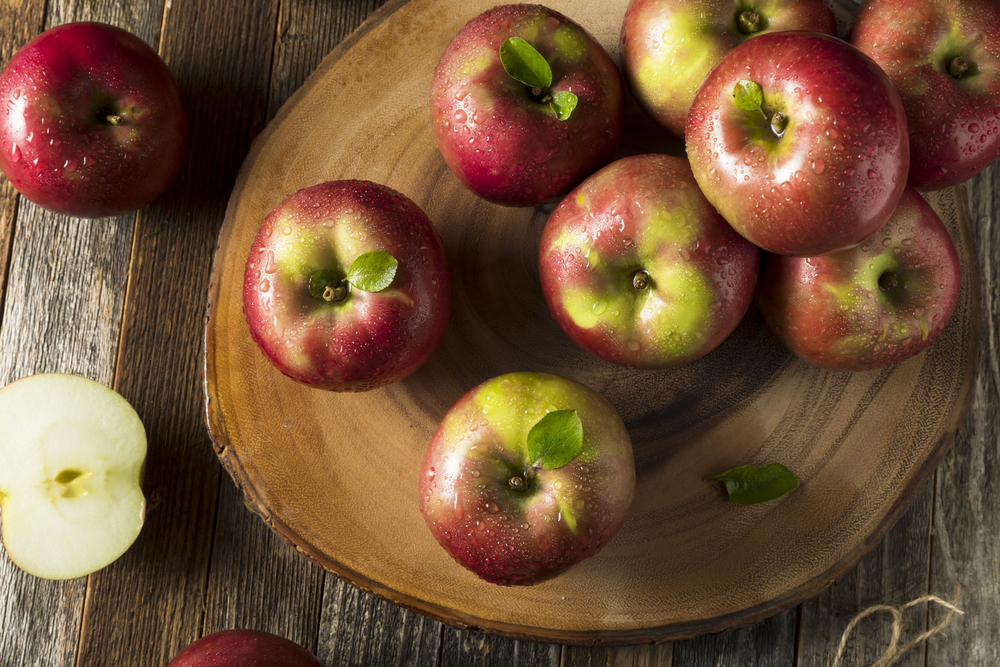Though you may have thought the only difference between apples was the color (green or red?), there is so much more to them! There are thousands of different apples in the world (though these days less than 50 are mass-grown), each with their own color, flavor profile, and uses. Here we’ve rounded up eight types of apples you’re likely to find for a quick and easy guide to common apples. So go to your local farmer’s market this weekend and pick out a few varieties for a quick taste test. If you’re lucky, they’ll be more options than just what’s on this list.
Cooking Apples
Golden Delicious
These light green or bright yellow apples are work horses in the kitchen. They have a thin skin and don’t store well (liable to bruising) but they are incredibly versatile in recipes: pies, salads, sauces, even freezing.
Jonagold
Jonagold apples are a hybrid of the ubiquitous Golden Delicious apple and the lesser common Jonathan apple. It’s red with hints of yellow and has a smooth skin and tart flavor. Use this for any recipe calling for apples.
Empire
This apple was developed in New York State in 1966 (hence the name) and it’s a cross between the McIntosh and Red Delicious. It’s almost perfectly round with a bright red skin and white flesh. It’s also firm, which makes it great for cooking.
Granny Smith
You’ll likely find this apple in your pie. Granny Smith apples hail from Australia, they have a bright green skin and are quite tart. These apples are also quite crisp, making them ideal candidates for baking (they can take the heat). Also use them for savory dishes. [pagebreak]
Snacking Apples
Red Delicious
The Red Delicious is the most popular apple in the U.S. and the most traditional. It’s top heavy with a red skin and white flesh. They’re juicy and soft and great for snacking.
McIntosh
McIntosh apples are a funny bunch, perhaps the most well-known but the least stable of the bunch. It has a soft inside that is sometimes described as mealy. It’s a great apple for snacking or for using in apple sauce or butter. If you use it to bake, make sure to add a thickener.
Cameo
This apple is only a few years old, discovered in Washington in 1987. It’s thought to come from both the Red and the Yellow Delicious apple. It has a thin skin and is juicy, crisp, and sweet. Dice it up and enjoy it raw or substitute it for Golden apples when baking.
Fuji
Fuji apples were created in the 1930s by Japanese growers and gained popularity in the U.S. in the 1980s. They’re a relative of the Red Delicious apple, crisp and very sweet. If you’re not snacking on them, use them in salads or slaw or any recipe that leaves them raw.


![Making Mealtime Matter with La Familia: Easy Sofrito [Video]](https://thelatinkitchen.com/wp-content/uploads/2015/10/sofrito-shutterstock__0-500x383.jpg)
![Easy Latin Smoothies: Goji Berry Smoothie [Video]](https://thelatinkitchen.com/wp-content/uploads/2015/12/goji_berry-shutterstock_-500x383.jpg)
















![Fun and Fast Recipes: Fiesta Cabbage Salad [Video]](https://thelatinkitchen.com/wp-content/uploads/2015/11/fiesta_cabbage_slaw-shutterstock_-500x383.jpg)









